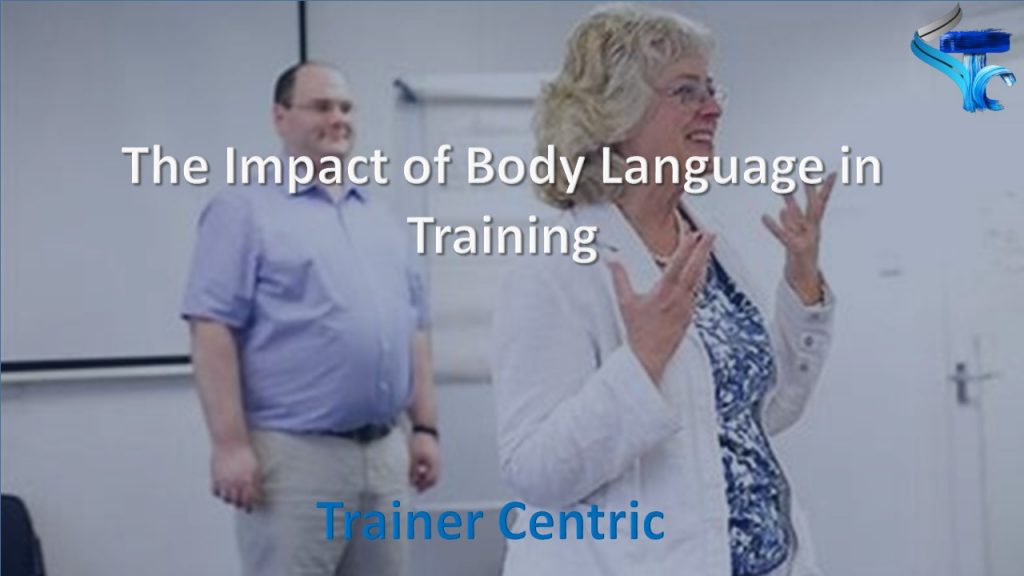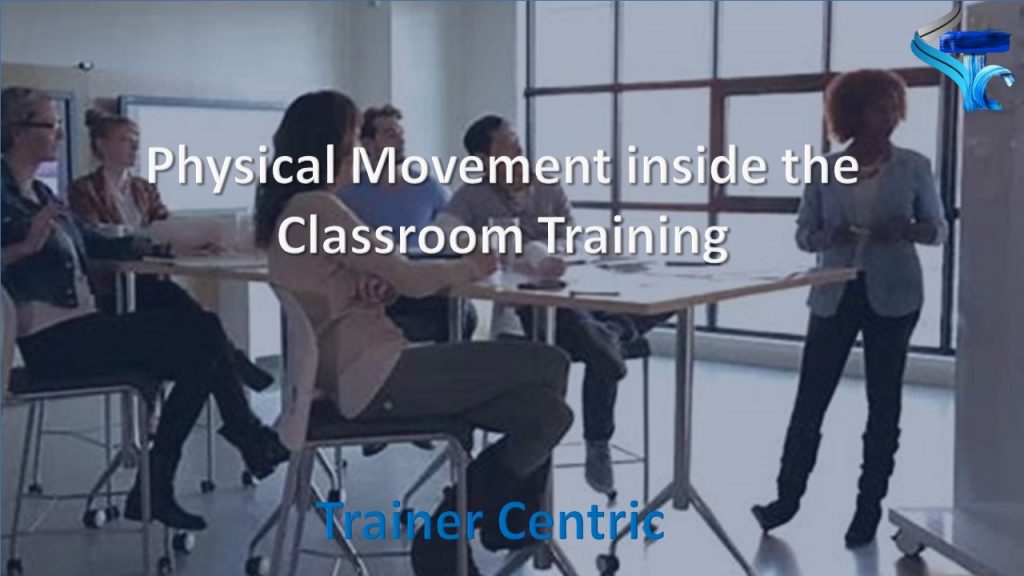
In the fast-paced and ever-evolving landscape of the corporate world, effective communication extends beyond the spoken word. It encompasses a realm of non-verbal cues, with body language playing a pivotal role in conveying messages, building relationships, and fostering a positive work environment. In this comprehensive exploration, we delve into the nuanced realm of body language in business, focusing on its profound impact on corporate training, the workplace, and the broader scope of professional interactions.
The Foundations of Body Language in Corporate Training
Unveiling the Silent Communicator: Body language, often referred to as the silent communicator, is a potent tool that professionals can harness to enhance their interpersonal skills. From a firm handshake to maintaining eye contact, every gesture sends a message, influencing perceptions in the business realm.
The Psychological Underpinnings: Understanding the psychology behind body language is imperative for navigating the intricate web of corporate interactions. It involves decoding cues such as facial expressions, posture, and gestures, offering insights into an individual’s thoughts, emotions, and intentions.
The Role of Body Language in Corporate Training
Building Trust and Rapport: In the realm of corporate training, establishing trust and rapport is fundamental. Body language serves as a bridge, fostering connections between trainers and trainees. A warm smile, open posture, and active listening contribute to an environment conducive to learning.

Enhancing Communication Effectiveness: Words alone may not suffice in conveying complex ideas or fostering engagement. By integrating body language into corporate training, trainers can amplify the impact of their messages. Non-verbal cues can clarify, emphasize, and complement verbal communication, ensuring a more comprehensive understanding among participants.
Non-Verbal Leadership Skills: Effective leaders understand the importance of non-verbal communication in leadership roles. Corporate training programs that emphasize body language empower aspiring leaders to master the art of presence, authority, and influence.
Body Language in Corporate Training
Creating a Positive Corporate Culture: The workplace is a microcosm of human interactions, and body language significantly contributes to the overall corporate culture. Positive body language fosters a harmonious work environment, where employees feel valued and understood.
Conflict Resolution and Emotional Intelligence: Professionals equipped with a keen understanding of body language are better equipped to navigate conflicts and practice emotional intelligence. Reading subtle cues enables individuals to address issues proactively, fostering a collaborative and supportive workplace.
Effective Team Dynamics: Teams thrive when communication is seamless, and body language plays a pivotal role in establishing effective team dynamics. From team-building activities to daily interactions, a nuanced understanding of non-verbal cues enhances collaboration and cohesion.
The Impact of Body Language in Training
The impact of body language in training is profound, influencing the effectiveness of communication, participant engagement, and the overall learning experience. Trainers who are mindful of their non-verbal cues can significantly enhance the success of their training sessions.
Establishing Authority and Confidence: Confident and assertive body language establishes the trainer’s authority in the training room. A poised stance, direct eye contact, and gestures that convey assurance contribute to participants’ perception of the trainer’s credibility. This, in turn, fosters a sense of trust and respect among participants.

Engagement and Active Participation: Dynamic body language is a catalyst for engagement. Trainers who use expressive gestures, move purposefully around the room, and maintain open and inviting postures encourage active participation. Engaged body language signals enthusiasm, which can be contagious and inspire participants to be more involved in discussions and activities.
Building Connection and Rapport: Positive body language is instrumental in building a connection between the trainer and participants. Smiles, nods of encouragement, and other affirming gestures create a rapport that goes beyond words. A trainer’s warm and approachable body language sets a friendly tone, making participants feel more comfortable and receptive to the learning experience.
Cultural Sensitivity: Body language is culturally nuanced, and trainers must be aware of these subtleties. Different cultures interpret gestures, eye contact, and personal space differently. Being culturally sensitive in body language ensures that trainers communicate effectively with diverse audiences, avoiding unintentional misunderstandings.
Managing Classroom Dynamics: Body language is a tool for managing the dynamics within the training room. Trainers can use their physical presence to signal transitions, highlight important points, or convey changes in tone. Effective use of body language helps maintain control and keeps participants focused on the training agenda.
Expressing Empathy and Understanding: Empathetic body language, such as nodding in response to participant comments or adopting a reflective posture, communicates understanding and validation. This non-verbal affirmation fosters a supportive learning environment where participants feel heard and valued.
Reducing Anxiety and Tension: Trainers who exhibit calm and composed body language can help alleviate anxiety and tension among participants. A reassuring presence, demonstrated through steady eye contact and composed gestures, contributes to a positive and conducive learning atmosphere.
Non-Verbal Reinforcement of Content: Certain concepts and messages can be reinforced effectively through non-verbal cues. For instance, using illustrative gestures, facial expressions, or body movements to emphasize key points adds a layer of reinforcement that enhances participants’ retention and understanding of the material.
Adaptability and Flexibility: A trainer’s body language reflects adaptability and flexibility. Being responsive to the needs of the audience, adjusting body language based on participant reactions, and demonstrating openness to different perspectives contribute to a more inclusive and adaptive training environment.
The impact of body language in training extends far beyond mere gestures; it shapes the entire learning experience. Trainers who master the art of positive, purposeful, and culturally sensitive body language can create an environment that is not only informative but also engaging, empowering, and conducive to effective learning.
Physical Movement inside the Classroom Training
The way you stand and move within the training room can significantly impact the dynamics of the learning environment. Standing and walking within the training room is a dynamic aspect of effective training delivery. A purposeful and inclusive approach to movement contributes to a positive learning environment, fostering engagement and connection with participants.
Why is it Important to do Physical Movement inside the Classroom?
Engaging in physical movement inside the classroom holds significant importance for both educators and students. This practice transcends traditional notions of teaching and learning, offering a range of benefits that contribute to a more effective and dynamic educational experience. Here are few benefits that you can rip by making physical movements during a classroom training.

Enhanced Learning Engagement: Physical movement in the classroom serves to break the monotony of static environments. Incorporating activities that involve movement helps capture and maintain students’ attention, leading to increased engagement with the material being presented.
Improved Cognitive Function: Movement has been linked to improved cognitive function. Physical activity increases blood flow and oxygen to the brain, which can enhance focus, memory retention, and overall cognitive performance. Students who are more physically active often exhibit better academic outcomes.
How to Walk inside the Training Room?
Here are some insights on how to stand and walk inside the training room:
- Centered and Balanced Stance: Begin with a centered and balanced stance. Distribute your weight evenly on both feet, avoiding favoring one side. This posture exudes confidence and stability.
- Open and Inclusive Posture: Keep your body language open and inclusive. Avoid crossing your arms, as it can create a barrier between you and the trainees. Instead, maintain an open posture to convey approachability and engagement.
- Purposeful Movement: When moving within the training room, do so with purpose. Aimless pacing can be distracting. Move deliberately to emphasize key points or transition between different sections of the room.
- Maintain Eye Contact: While standing or walking, maintain consistent eye contact with the trainees. This fosters a sense of connection and ensures that your presence is felt throughout the room. Scan the audience regularly to engage with all participants.
- Utilize the Space: Take advantage of the entire training space. Move around to connect with different sections of the audience. This dynamic movement helps keep participants engaged and prevents any sense of monotony.
- Be Mindful of Proximity: Pay attention to your proximity to the trainees. Striking a balance between being approachable and respecting personal space is crucial. Avoid standing too far away or getting too close, as it may affect the trainees’ comfort level.
- Facilitate Interaction: Encourage interaction by moving closer to participants during discussions or group activities. This physical presence reinforces your role as a facilitator and encourages a more collaborative learning atmosphere.
- Gesture with Intention: Incorporate purposeful gestures into your movements. Whether pointing to a visual aid or using hand gestures to emphasize a point, intentional movements can enhance your verbal communication and keep the audience engaged.
- Mindful of Obstacles: Be aware of any obstacles in the training room. Tripping hazards or cluttered pathways can distract from your message and compromise the professionalism of your presentation. Navigate the space with caution.
- Adapt to Room Layout: Adjust your movement based on the layout of the training room. If the room is set up in a classroom style, navigate between rows. In a more open layout, utilize the entire space to engage with participants.
How to stand as a trainer during a classroom training?
As a trainer during a classroom training, your posture and stance play a crucial role in conveying confidence, authority, and approachability. Here are some guidelines on how to stand effectively:
Confident and Upright Posture: Stand with a confident and upright posture. Keep your shoulders back, chest open, and spine straight. This stance exudes confidence and sets a positive tone for the training session.
Balanced Weight Distribution: Distribute your weight evenly on both feet. Avoid leaning on one leg, as this may convey a lack of stability. A balanced weight distribution helps you appear grounded and in control.

Natural and Relaxed Position: Find a natural and relaxed position that feels comfortable to you. Tension in your body may be perceived by the audience, so strive for a posture that is both confident and relaxed.
Open Body Language: Maintain open body language to create a welcoming atmosphere. Avoid crossing your arms, which can be interpreted as defensive. Instead, keep your arms relaxed at your sides or use purposeful gestures to emphasize points.
Comfortable Footwear: Wear comfortable footwear, especially if you anticipate standing for extended periods. This contributes to your overall comfort and helps you maintain an active and engaged presence.
By paying attention to your standing posture and movements, you can create an environment that enhances learning, encourages participant engagement, and establishes you as a confident and effective trainer.
How to Properly Sit inside the Classroom as a Trainer?
As a trainer during a classroom training, your sitting posture plays a crucial role in conveying professionalism, engagement, and approachability. Here are guidelines on how to sit effectively:
Upright Posture: Sit with an upright and straight posture. Avoid slouching or leaning back, as this can convey a lack of attentiveness. A straight posture communicates confidence and a focused demeanor.
Balanced Weight Distribution: Distribute your weight evenly on both hips. Avoid favoring one side, as an uneven distribution may convey a lack of stability. Centered weight distribution contributes to a more grounded and composed appearance.
Feet Flat on the Floor: Keep your feet flat on the floor. This posture promotes stability and ensures a grounded presence. Crossing your legs excessively may distract from your message and convey a casual demeanor.
Open and Inclusive Body Language: Maintain open and inclusive body language. Avoid crossing your arms, as it may be perceived as defensive. Instead, keep your arms relaxed on the table or use purposeful gestures to emphasize key points.
Engage with Participants: Turn your body slightly towards the participants to signal engagement. Direct eye contact and occasional scanning of the room foster a sense of connection and encourage active participation.
Use of the Table: If there is a table in front of you, use it purposefully. Keep necessary materials within reach, and avoid clutter that may be distracting. Use the table as a tool to organize your space and facilitate smooth transitions.
Gesture with Intention: Incorporate purposeful gestures into your seated position. Gestures can emphasize key points and maintain participant engagement. However, ensure that gestures are natural and not overly exaggerated.
Adapt to the Room Setup: Be mindful of the room setup when determining your sitting position. In a traditional classroom layout, facing the participants directly may be suitable. In a more collaborative setting, consider sitting at a roundtable to encourage interaction.
Comfortable Seating: Choose comfortable seating that supports an extended period of sitting. Uncomfortable chairs may distract you and impact your ability to focus on the training. Prioritize comfort to maintain your energy and attentiveness.
Facilitate Discussions: If discussions are a part of your training, be prepared to facilitate from a seated position. This may involve gently guiding the conversation, taking notes, and ensuring that all participants have the opportunity to contribute.
Mindful of Personal Space: Be conscious of your proximity to participants. Striking a balance between being approachable and respecting personal space is essential. Avoid sitting too far away, as it may create a sense of detachment.
Confidence in Silence: Embrace moments of silence with confidence. Avoid fidgeting or tapping, as these behaviors may distract participants. A composed and calm presence during silent intervals conveys control and professionalism.
Stay Attentive: Demonstrate attentiveness by actively listening to participants. Nodding in agreement, maintaining eye contact, and responding appropriately to comments contribute to a positive training environment.
Practice and Self-Reflection: Practice your sitting posture before the training session. Consider recording yourself or seeking feedback from colleagues to identify any habits or postures that may need adjustment. Engage in self-reflection to refine your seated presence.
By paying attention to your sitting posture, you can create an environment that fosters engagement, professionalism, and effective communication during classroom training sessions.
Conclusion
The exploration of body language in the corporate context reveals its undeniable significance in shaping communication, relationships, and the overall professional environment. From the foundational aspects of a firm handshake to the intricate nuances of non-verbal cues in leadership, body language serves as a silent yet powerful force in the business realm.
In the domain of corporate training, recognizing the role of body language becomes paramount. Establishing trust, enhancing communication, and fostering non-verbal leadership skills are essential components that contribute to the success of training programs. The workplace itself benefits from positive body language, creating a culture where collaboration, conflict resolution, and effective team dynamics thrive.
Finally, the article underscores the broader impact of physical movement in the classroom setting, emphasizing the benefits of enhanced learning engagement and improved cognitive function. By integrating these insights into training practices, educators can create dynamic and enriching learning experiences.
In essence, mastering the language of body cues is an art that extends beyond spoken words, enriching professional interactions and training environments alike. Trainers who adeptly navigate this silent realm contribute to an atmosphere that is not only informative but also engaging, empowering, and conducive to effective learning.

![The Power of Storytelling in Corporate Training: Igniting Success and Inspiring Growth [2023]](https://trainercentric.com/wp-content/uploads/2023/06/storytelling-1024x576.jpg)

